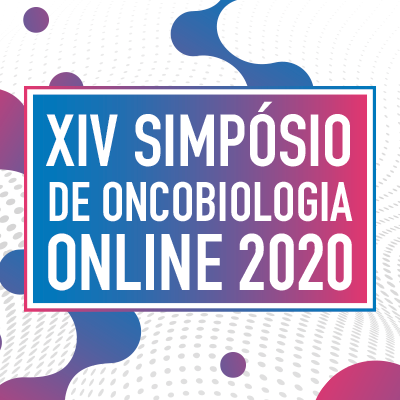Proceedings of Oncobiology Symposiums
Proceedings of XIV Oncobiology Symposium
CYTOTOXIC POTENTIAL OF SYNTHETIC SUBSTANCES NAPHTHOQUINONES WITH ACRIDINE IN ORAL SQUAMOUS CELL CARCINOMA
How to cite this paper?
To cite this paper use one of the standards below:
How to cite this paper?
- Presentation type: IC - Undergraduate Students
- Track: Drugs and/or Natural Products Therapy
- Keywords: Oral Cancer; Naphthoquinone;
Authors:
- 1 FCB Departamento de Ciencias Basicas / Instituto de Saude de Nova Friburgo / Universidade Federal Fluminense
- 2 Universidade Federal Fluminense
Please log in to watch the video
Log in- Presentation type: IC - Undergraduate Students
- Track: Drugs and/or Natural Products Therapy
- Keywords: Oral Cancer; Naphthoquinone;
Authors:
- 1 FCB Departamento de Ciencias Basicas / Instituto de Saude de Nova Friburgo / Universidade Federal Fluminense
- 2 Universidade Federal Fluminense
INTRODUCTION AND OBJECTIVES: Oral cancer is the fifth most prevalent in men in Brazil until 2018. Traditional chemotherapy presents many side effects. Natural or synthetic naphthoquinones have proven cytotoxic potential. Substances containing acridines show great antineoplastic action. Synthesizing substances combining naphthoquinones and acridines is an attractive planning strategy for new therapeutics agents. The objectives are: determine cytotoxicity and selectivity of 15 substances in OSSC and Fibroblast lines. Submit that most active to molecular biology assays. Characterize its stability. Perform in silico evaluation of chemical and biologic properties. MATERIAL AND METHODS: 15 substances (NAC 1-15) synthesized collaboratively with Instituto de Quimica da Universidade Federal Fluminense, hybridizing acridine with 2-amino-1,4-naphthoquinone. Tested in MTT assay in OSCC9 and human fibroblasts-treated at 2xIC50 of those with best results, select the 3 most selective and determine IC50 in fibroblasts, OSCC4 and 25, finally calculate the Selectivity Index (S.I). In order to stipulate stability, OSCC9 cell line were treated with that most active substance at 2XIC50 concentration, exposed to 37°C at different periods of time. Carboplatin and DMSO were positive and negative controls for all experiments. In silico results were obtained at ORISIS, ADMETsar and Mollinspiration servers. RESULTS AND CONCLUSION: IC50 values in µM for SCC9 cells: NAC1 (14,69±0,011); NAC2 (51,57±0,189); NAC3 (14,71±0,126); NAC4 (5,86±0,1575); NAC5 (4.105±0,070); NAC6 (4.467±0,070); NAC7 (2.066±0,072); NAC8 (8.934±0,096); NAC9 (2.218±0,123); NAC10 (4.754±0,068); NAC11 (7.636±0,096); NAC12 (6.844±0,1415); NAC13 (7.206±0,086); NAC14 (5.906±0,145); NAC15 (3.323±0,132). Fibroblasts viability: NAC5 (82%), NAC7 (73,68%), NAC3 (72,70%) e NAC9 (67,77%), NAC4 (50,99%), NAC6 (53,72%), NAC8 (55,62%) e NAC10 (57,45%). IC50 in OSCC4: NAC3 (53,75±0,096), NAC5 (18,86±0,093), NAC7 (10,99±0,658); and OSCC25: NAC3 (21,52±0,071), NAC5 (11,50±0,059) e NAC7 (7,41±0,069). SeIectivity Index: NAC3 (2.933), NAC5 (2.050) e NAC7 (1.152). NAC3 stability: in the first hour of exposure, the substance showed instability then proved stable in the other hours, unlike controls, wich remained constant during 48 hours at 37°C. In silico results: cLOGP: 5,72; solubility: -7,2; Pg-P substrate: -0,723; CYP3A4 inhibitor: +0,670. Observing the data presented above, it is concluded that NAC3 stands out with the highest selectivity index. In addition it’s thermolabile, losing some effectiveness in 1 hour at 37°C. Finally, in silico analysis demonstrate good feature as drug (able to pass through plasmatic membrane, well absorved, CYP34A and Pg-P inhibitor). Molecular assays are in progress to clarify the induced death pathway.
Question
Anderson Junger Teodoro
Como aluno de iniciação científica, quais foram suas atividades no projeto e nestes resultados?
- 1 answer
Pergunta
Sara Santos Bernardes
Parabéns pelo trabalho! O delineamento e a apresenação dos dados está clara e objetiva. Entendo que é um screening inicial para avaliar a citotoxicidade da droga, porém como o MTT avalia a atividade/viabilidade mitocondrial, seria interessante vocês terem realizado outros testes, como viabilidade celular com azul de tripan ou células viáveis com coloração por cristal violeta. Esses testes chegaram a ser realizados?
Outra pergunta é: vocês pretendem testar essa droga in vivo, enxertando essas células de CCE em camundongos imunossuprimidos, ou em outros modelos experimentais de câncer, como por exemplo, melanoma murino com células B16F10 e câncer de mama murino com células 4T-1?
Obrigada
- 2 answers
Gabriel Ouverney
Ola, Sara. Agradeco e fico feliz pelo interesse. Esses testes com azul de tripan ou coloracao por cristal violeta nao foram realizados mas estamos avaliando a existencia de morte celular por outros metodos, como foi o caso do experimento mostrado no trabalho medindo a atividade de caspases 3 e 7. E seguiremos com outros experimentos neste sentido. Mas agradeco sua sugestao e avaliaremos a aplicacao desses testes. E sim, pretendemos testar a substancia em modelo animal, era nossa intencao para este ano mas com a pandemia o projeto acabou tendo um atraso em relacao ao que planejavamos, infelizmente. O objetivo é testar em animais imunossuprimidos em modelo de CCEB induzido por quimo carcinogenos ou por xenotransplante das linhagens humanas SCC4,9 e 25 e tambem com outros tipos tumorais que ja temos no laboratorio como celulas de melanoma B16f10, colon HCT116, e tambem de cancer de mama. Respondido? Abracos
Sara Santos Bernardes
Obrigada pelos esclarecimentos e parábens pelo trabalho. Espero que em breve você consiga dar seguimento.
Sara
Streamline your Scholarly Event
With nearly 200,000 papers published, Galoá empowers scholars to share and discover cutting-edge research through our streamlined and accessible academic publishing platform.
Learn more about our products:
How to cite this proceedings?
This proceedings is identified by a DOI , for use in citations or bibliographic references. Attention: this is not a DOI for the paper and as such cannot be used in Lattes to identify a particular work.
Check the link "How to cite" in the paper's page, to see how to properly cite the paper


Gabriel Ouverney
Neste projeto contei com colaboracao nos resultados referentes ao ensaio "in silico" no qual tive participacao, atividade de caspases e no video mostrando as alteracoes morfologicas que aparece na apresentacao. O restante dos resultados, desde o inicio, foram de experimentos realizados por mim.